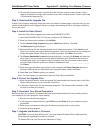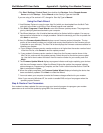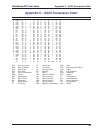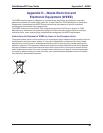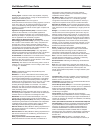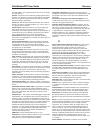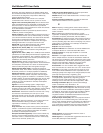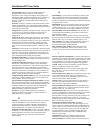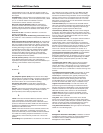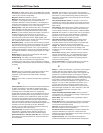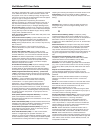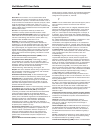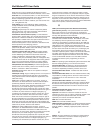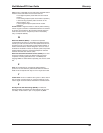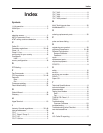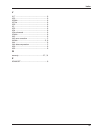
Glossary
43
MultiModemZPX User Guide
S
Serial Port: The connector on a PC used to attach serial
devices (those that need to receive data one bit after another),
such as a mouse, a printer or a modem. This consists of a 9- or
25-pin connector that sends data in sequence (bit by bit). Serial
ports are referred to as “COMx” ports, where x is 1 to 4 (i.e.,
COM1 through COM4). A serial port contains a conversion chip
called a “UART” which translates between internal parallel and
external serial formats.
Service: The requirements offered by an RPOA to its
customers to satisfy specific telecommunications needs.
Severely Errored Seconds (SES): Refers to a typical T1 error
event where an error burst occurs (a short term, high bit-error
rate that is self-clearing). Per the ITU-T (CCITT) G.821: any
second in which the BER is less than 1x10 -3 .
Signaling: The process of establishing, maintaining,
accounting for, and terminating a connection between two
endpoints (e.g., the user premises and the telco CO). Central
office signals to the user premises can include ringing, dial
tone, speech signals, etc. Signals from the user’s telephone can
include off-hook, dialing, speech to far-end party, and on-hook
signals. In-band signaling techniques include pulse and tone
dialing. With common channel signaling, information is carried
out-of-band.
Simple Network Management Protocol (SNMP): TCP/IP
protocol that allows network management.
Simultaneous Voice Data (SVD): A technology for letting a
user send data via a modem, and use a handset to talk to
another user at the same time over the same connection. The
alternative, making a second call, can be expensive or even
impossible. The uses for SVD are telecommuting,
videoconferencing, distant learning, tech support, etc.
Stop Bit: One of the variables used for timing in asynchronous
data transmission. Depending on the devices, each character
may be trailed by 1, 1.5, or 2 stop bits.
Switched Virtual Circuit (SVC): A data transmission type
where the connection is maintained only until the call is cleared.
Switched Line: In communications, a physical channel
established by dynamically connecting one or more discrete
segments. This connection lasts for the duration of the call,
after which each segment can be used as part of a different
channel. Contrast with leased line.
Switched Network: A network in which a temporary connection
is established from one point via one or amore segments.
Synchronous Data Link Control (SDLC): A discipline
conforming to subsets of the Advanced Data Communications
Control Procedures (ADCCP) of the American National
Standards Institute (ANSI) and High-level Data Link Control
(HDLC) of the International Organization for Standardization, for
managing synchronous, code-transparent, serial-by-bit
information transfer over a link connection. Transmission
exchanges may be duplex, or half-duplex over switched or
nonswitched links. The configuration of the link connection may
be point-to-point, multipoint, or loop.
Synchronous Transmission: The transmission of data which
involves sending a group of characters in a packet. This is a
common method of transmission between computers on a
network or between modems. One or more synchronous
characters are transmitted to confirm clocking before each
packet of data is transmitted. Compare to Asynchronous
Transmission.
Systems Network Architecture (SNA): The description of the
logical structure, formats, protocols, and operational sequences
for transmitting information units through, and controlling the
configuration and operation of, networks.
T
TCP/IP: A set of communication protocols that support peer-to-
peer connectivity functions for both local and wide area
networks.
T Carrier: The generic name for a digitally multiplexed carrier
system. In the North American digital hierarchy, a T is used to
designate a DS (digital signal) level hierarchy. Examples: T1
(DS1) is a 1.544 M bps 24-channel designation. In Europe, T1
is called E1. The T Carrier system was originally designed for
transmitting digitized voice signals, but has since been adapted
for digital data applications.
T1: A digital transmission link capable of 1.544M bps. T1 uses
two pairs of normal UTP, and can handle 24 voice
conversations, each digitized at 64 Kbps. T1 is a standard for
digital transmission in the U.S., Canada, Japan and Hong Kong.
T1 is the access method for high-speed services such as ATM,
frame relay, and SMDS. See also T Carrier, T1 line and FT1.
T1 Channel Tests: A set of diagnostics that vary by carrier,
used to verify a T1 channel operation. Can include Tone, Noise
Level, Impulse Noise Level, Echo Cancelers, Gain, and
Crosstalk testing.
T1 Framing: To digitize and encode analog voice signals
requires 8000 samples per second (twice the highest voice
frequency of 4000 Hz). Encoding in an 8-bit word provides the
basic T1 block of 64 Kbps for voice transmission. This “Level 0
Signal, as its called, is represented by “DS-0”, or Digital Signal
at Level 0. 24 of these voice channels are combined into a
serial bit stream (using TDM), on a frame-by-frame basis. A
frame is a sample of all 24 channels; so adding in a framing bit
gives a block of 193 bits (24x8+1=193). Frames are transmitted
at 8000 per second (the required sample rate), creating a
1.544M (8000x193=1.544M) transmission rate.
T1 Line: A digital communications facility that functions as a
24-channel pathway for data or voice transmission. A T1 line is
composed of two separate elements: the Access element and
the Long Haul element.
T1 Mux: A device used to carry many sources of data on a T1
line. The T1 mux assigns each data source to distinct DS0 time
slots within the T1 signal. Wide bandwidth signals take more
than one time slot. Normal voice traffic or 56/64 Kbps data
channels take one time slot. The T1 mux may use an internal or
external T1 DSU; a “channel bank” device typically uses an
external T1 CSU.
Transmission Control Protocol / Internet Program (TCP/IP):
A multi-layer set of protocols developed by the US Department
of Defense to link dissimilar computers across dissimilar and
unreliable LANs.
Terminal: The screen and keyboard device used in a
mainframe environment for interactive data entry. Terminals
have no “box”, which is to say they have no file storage or
processing capabilities.
Terminal Adapter (TA): An ISDN DTE device for connecting a
non-ISDN terminal device to the ISDN network. Similar to a
protocol converter or an interface converter, a TA connects a
non-ISDN device between the R and S interfaces. Typically a
PC card.
Tie line: A dedicated circuit linking two points without having to
dial a phone number (i.e., the line may be accessed by lifting
the telephone handset or by pushing a button).
Time-Division Multiplexing (TDM): Division of a transmission



